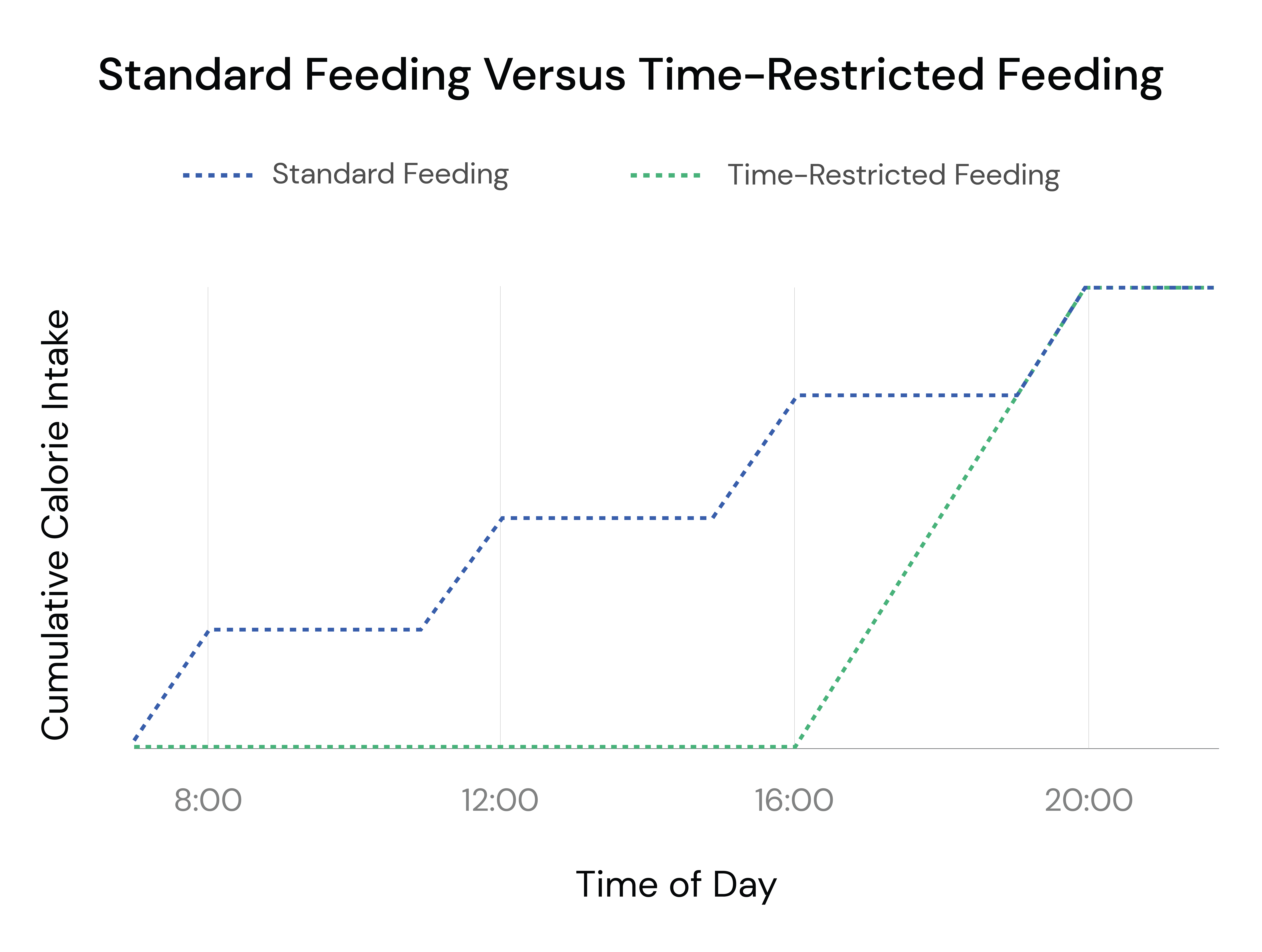Rather than eating equally spaced meals throughout the day, time-restricted feeding encourages dieters to eat all of their meals within a quite narrow time window each day, often spanning 4-8 hours. This strategy is sometimes called intermittent fasting within the fitness world, but scientists call it time-restricted feeding.

Graphical representation of time-restricted feeding with arbitrary values
In the scientific literature, there are a few types of protocols for intermittent fasting. The most common include alternate day fasting, fasting for a two-day period, or including two fasts per week on non-consecutive days.

Note: “fasting days” often include restricting energy intake to 0-25% of the individual’s daily energy requirement
Meta-analyses on this subject generally tend to indicate that intermittent energy restriction strategies, using a variety of fasting protocols, do not lead to greater weight loss than typical weight loss diets. However, they also don’t seem to be substantially worse (at least in untrained subjects).
A lot of people tend to eat fewer Calories when they use a restricted daily feeding window, which can facilitate fat loss goals. However, time-restricted feeding isn’t necessarily more effective for weight loss when Calorie intake is controlled.
In addition, time-restricted feeding inherently foregoes the potential benefits of equally spaced protein feedings on protein turnover in muscle tissue. So, time-restricted feeding seems to be a viable way to indirectly reduce Calorie intake, and an optimal approach for people interested in maximizing muscle growth (or retention) might consider opting for an 8-hour feeding window with three distinct protein doses throughout.
While we maintain concerns about lean mass retention when using prolonged fasting periods, intermittent fasting strategies that implement long fasting windows can be effectively used by dieters who prefer the way these protocols fit their daily schedule or satiety preferences, and aren’t super concerned about muscle gain (or retention).
If you choose to do intermittent fasting, you can easily implement any of the common intermittent fasting protocols in MacroFactor. MacroFactor shows your daily meals on a timeline, which enables you to monitor your feeding window as you see fit.
Now that you’ve learned about time-restricted feeding windows, you might enjoy one of these articles next:
How to Configure Your Food Logger
How to Log to Any Hour on the Timeline